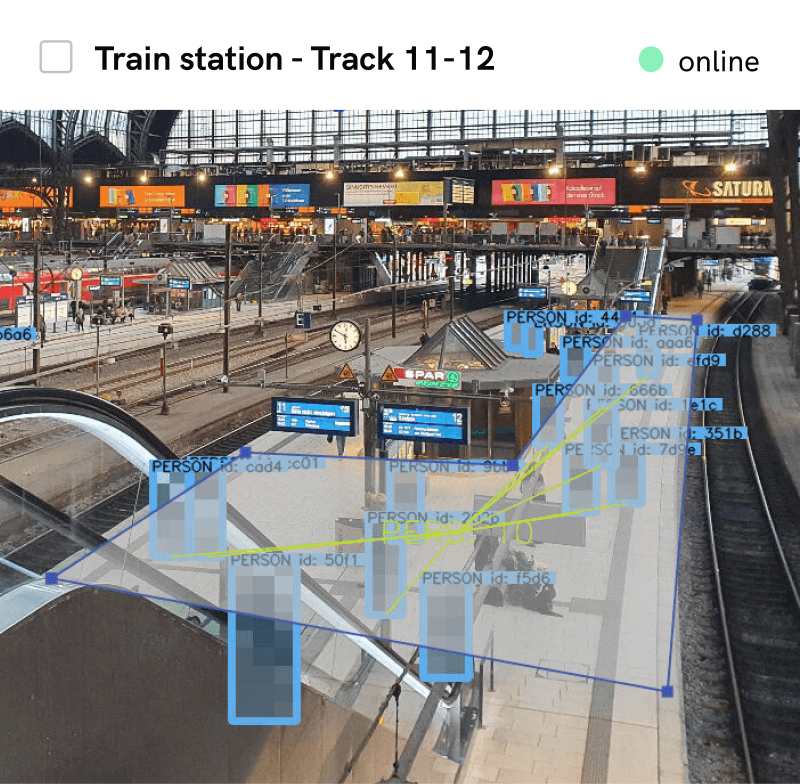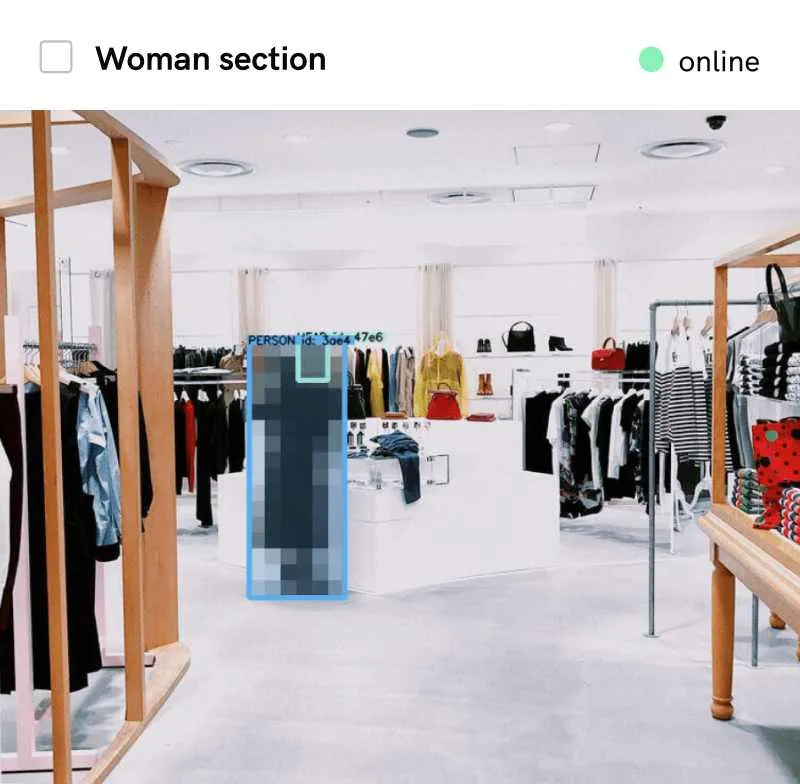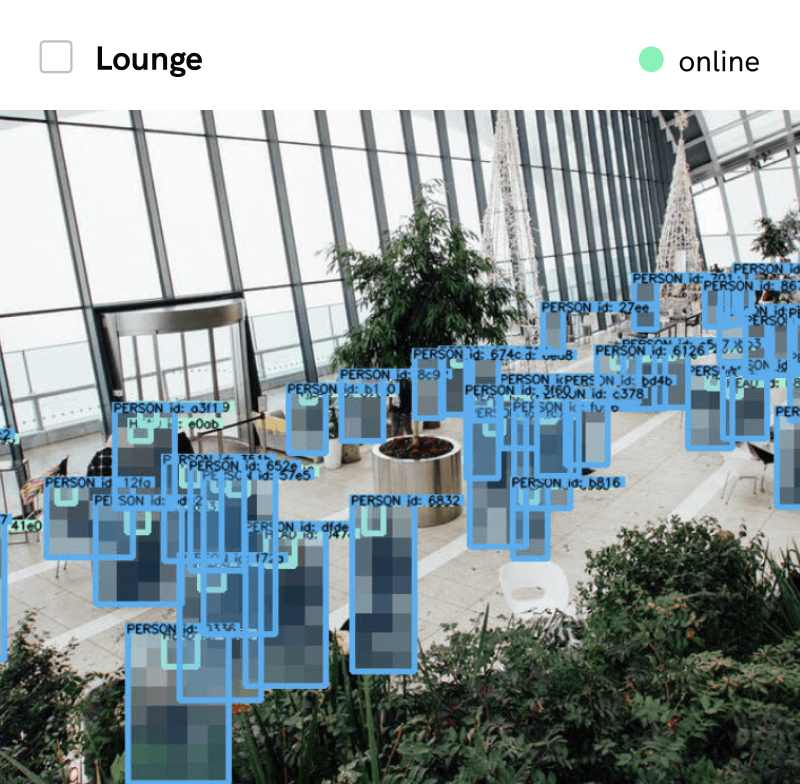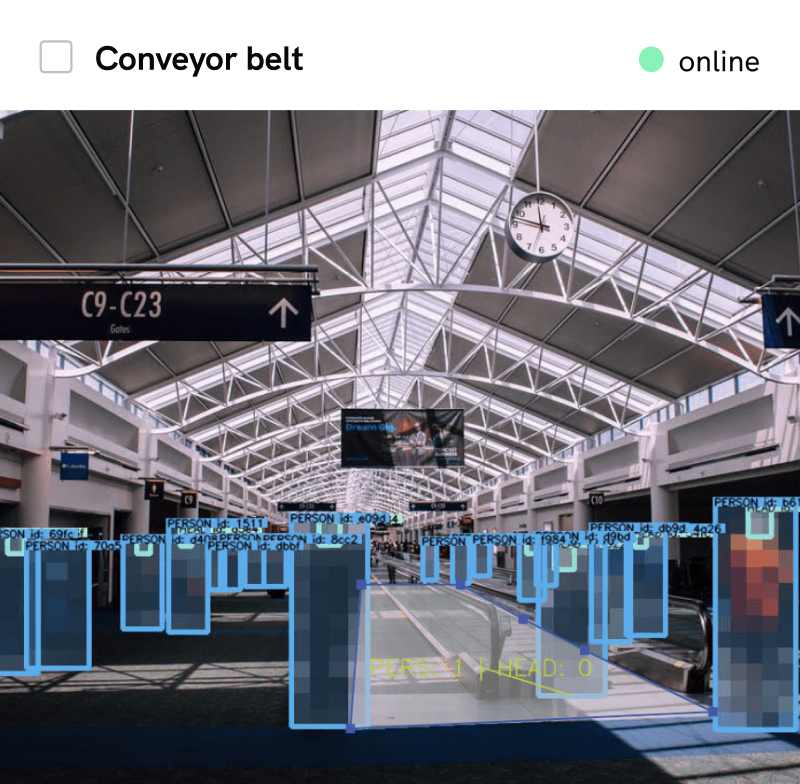AI Solutions for Enhancing Elderly Care
As our populations age and the number of seniors around the globe rises, the demand for comprehensive elderly care becomes ever more pressing. Can AI video analytics provide an answer, not just in augmenting elderly support but also in fostering an environment where older adults can thrive? This article delves into the capabilities of AI video analytics in revolutionizing elderly care by offering sophisticated solutions to monitor, assist, and enhance the lives of the elderly.
Published
April 12, 2024
.avif)
AI Solutions for Enhancing Elderly Care
Aging Population
Advancements in technology and medicine have significantly extended human lifespans across the globe. Today, it is common for individuals to live well into their sixties and beyond, contributing to a notable increase in the global elderly population. This trend is expected to continue, with the proportion of older individuals rising steadily in the coming decades.
As individuals age, they often encounter a range of physical, mental, and social challenges that can impair their ability to live independently. Traditionally, families have borne the primary responsibility for supporting their elderly members in navigating these challenges. However, with the changing dynamics of modern societies, many are turning to alternative solutions for elder care, such as residential nursing homes, assisted living facilities, and professional caregiving services.
Amidst these options, Artificial Intelligence (AI) video analytics technology emerges as a transformative solution to enhance the safety and well-being of the elderly population. AI video analytics offers a proactive approach to monitor and address the health and happiness of older adults, promising a new era of support that is both effective and empathetic. This innovative technology augments traditional care methods and opens up new possibilities for aging individuals to maintain their independence and quality of life.
.avif)
Challenges in Elderly Care
Physical Challenges
One of the main problems people face in their older ages is decreased dexterity and mobility. This can make doing daily tasks such as cooking, cleaning, grooming, and dressing very difficult without assistance. Among these, reduced mobility in the elderly highly increases the likelihood of a fall. A fall can happen when a person drops down to the ground. While not being a critical concern for a healthy younger person, falls in people over 65 are a leading cause of injury and death. Considering the severity of this issue, many devices are in use to prevent falls or shorten the response time to a fall with fall detection systems. We can roughly divide these devices into two categories: wearable and ambient ones. Wearable sensor devices used for fall detection in the elderly population are lightweight wearable sensors that detect any abnormal movements of a person. When the algorithm determines that a person has fallen, it notifies an agent who gets in contact with the person. Ambient sensors on the other hand are placed not on the person but in their surroundings in the form of video cameras placed around their homes or inside rooms in nursing homes and work in a similar way of detection and reporting. Despite not being preventative approaches, the use of these devices can be critical to the first response to a fall and potentially save lives.
Mental Challenges
Cognitive challenges are another category of challenges faced by seniors. Ranging from mild impairment to detrimental deficits, mental challenges can affect memory, problem-solving abilities, attention, and language skills making it difficult for individuals to manage daily activities. This can lead to frustration, a loss of independence, and an increased reliance on others. In more severe cases mental challenges can be classified as Dementia, including Alzheimer's disease, which dramatically impacts individuals' ability to perform daily tasks and engage in activities they once enjoyed, often necessitating comprehensive care. Maintaining a sense of normalcy and routine becomes increasingly difficult with the progression of dementia as it brings about memory loss, confusion, and changes in personality and behavior, which can be distressing for both the individual and their caregivers.
The traditional solution to these problems is a constant monitoring of the individuals by other people either in nursing homes or through private care professionals. These methods of elder care often rely heavily on human monitoring and surveillance, raising significant privacy concerns and potentially causing discomfort among those being cared for. Such approaches, while rooted in the best intentions, demand considerable resources in terms of staffing and time, making them less efficient and sustainable in the long term. Moreover, these methods are susceptible to human error and the risk of misuse, highlighted by the distressingly high instances of reported elder abuse. This reliance on constant human oversight not only strains care facilities and families but also compromises the autonomy of the elderly, underscoring the urgent need for innovative solutions that respect privacy while ensuring safety and quality care.
The Role of AI Video Analytics in Elderly Care
What is AI Video Analytics?
Artificial Intelligence Video Analytics is an advanced technology that employs artificial intelligence to analyze video content in real-time or from recorded footage. This technology is capable of recognizing patterns, detecting anomalies, and extracting relevant information from video data without human intervention. By doing so, it transforms vast amounts of video into actionable insights, making it a powerful tool across various sectors. As with most fields, in the medical industry, the application of AI Video Analytics plays a pivotal role by enhancing patient care, operational efficiency, and safety measures. It's used for a range of applications, from monitoring patient behavior and movements to ensure their safety, to managing crowds in hospital settings and ensuring compliance with health protocols. This technology supports medical staff by providing real-time alerts and insights, enabling quicker responses to potential health risks or security breaches, and optimizing hospital workflows.
When it comes to elderly care, AI Video Analytics becomes even more significant. It offers a non-intrusive way to monitor the well-being of older adults, particularly those with conditions like dementia who may not always be able to communicate their needs effectively. This level of monitoring ensures timely assistance when needed and supports the elderly in maintaining a degree of independence, underscoring the invaluable role of AI Video Analytics in improving the quality of care for the aging population.
Benefits of using AI Video Analytics in Elderly Care
In dynamic environments like hospitals and nursing homes, the task of simultaneously overseeing numerous patients and expansive facilities can be addressed through the advanced capabilities of video analytics. This technology alleviates the workload of medical and security staff while improving patient safety.
Cost-efficiency
AI video analytics software is usually designed to seamlessly integrate into existing CCTV feeds, eliminating the cost and effort of replacing existing infrastructure or hardware. It can be implemented quickly, in a cost-effective way. Through the invaluable data it provides, it also optimizes organizational procedures to be the most efficient it can be, ensuring the best resource allocation possible. By automating routine surveillance tasks, it reallocates precious human resources to more critical, hands-on patient care, which can significantly reduce overhead costs and improve the quality of the care service.
Real-time feedback
Considering how crucial the response time is to medical emergencies, AI Video analytics sets itself apart from other technologies by offering real-time feedback and reports. It can provide continuous monitoring 24/7 without the need for manpower. This constant vigilance ensures that any unusual activities or potential emergencies are detected immediately, allowing for swift action to be taken. Whether it's identifying a patient in distress, a potential fall, or other critical incidents, AI video analytics facilitates immediate intervention, which can be pivotal in preventing further complications or enhancing the chances of recovery.
Privacy and Autonomy
The use of AI Video Analytics in elderly care also brings significant benefits in terms of privacy and autonomy for the elderly. Unlike traditional methods of monitoring that may require constant human presence, AI video analytics allows for discreet surveillance that respects the individual's privacy. This technology can monitor safety and health indicators without making the elderly feel like they are under constant watch or that their personal space is being invaded. Consequently, this fosters a sense of independence among the elderly, as they don't feel the persistent need for assistance or supervision. They can enjoy their daily activities with the assurance of safety and support when necessary. This balance between safety and independence is crucial for the mental well-being and satisfaction of elderly individuals, making AI video analytics an invaluable tool in modern elderly care.
How Does AI Video Analytics Enhance Elderly Care?
Fall Detection
Falls significantly impact the well-being of geriatric patients. AI Video Analytics utilizes real-time data and imagery which greatly improves the accuracy and efficiency of detecting falls. This method simplifies monitoring, aiding in swift, appropriate responses and care. Moreover, the continuous learning capability of AI means that over time, the system becomes even more adept at identifying subtle indicators of fall risk, potentially alerting caregivers to intervene before a fall occurs thus devising strategies to prevent future incidents, enhancing safety and supporting the overall health of elderly individuals.
.avif)
Ward Monitoring and Occupancy Checks
AI video analytics revolutionizes ward monitoring and occupancy checks within elderly care facilities. This technology enables precise monitoring of bed occupancy, alerting staff when availability decreases, crucial for managing patient flow effectively. It informs about the number of occupants in any given space at any given time, allowing real-time monitoring of patients. It also identifies unused equipment like wheelchairs or beds in corridors, highlighting how long they've been unattended. Such alerts help staff address potential safety hazards promptly, ensuring clear pathways and accessibility. By optimizing these aspects of care, elderly facilities enhance safety, efficiency, and the overall well-being of residents.
.avif)
Perimeter Security
Perimeter security is a cornerstone of elderly care facility safety, ensuring a secure environment for both residents and nursing staff. By integrating advanced video surveillance analytics, facilities can effectively monitor all communal and external areas, including gardens and parking lots. Crucial features like loitering detection are integral, proactively alerting staff to any unusual or potentially risky activity. In environments where tensions may rise, particularly in areas like dementia care units where confusion can lead to unrest, analytics offer a proactive approach to identifying and alerting staff to potential security concerns.
Aging Better with AI Technologies
We are living longer than ever in human history and while celebrating this additional twenty years of life we should also focus on leveraging technology in a way that also betters our aging processes, with the aim being not only extending life but also enriching it, ensuring that those extra decades are lived with fullness and independence. The integration of AI Video Analytics into elderly care is a testament to how technology can be a powerful ally in achieving this goal. Looking forward, the continued innovation in AI and related technologies offers a promising horizon where living longer also means living better. By prioritizing developments that support autonomy, health, and well-being, we can transform the narrative of aging into one of empowerment and vitality.
More about Isarsoft
With Isarsoft Perception, your camera systems become part of your business intelligence. Whether the goal is to increase efficiency, customer satisfaction or safety, Isarsoft Perception provides the insights needed for informed decisions.

Contact us, to learn more about how to turn security cameras into intelligent sensors.
Optimize your business processes.
Improve business processes with video-based business intelligence from Isarsoft.









.webp)